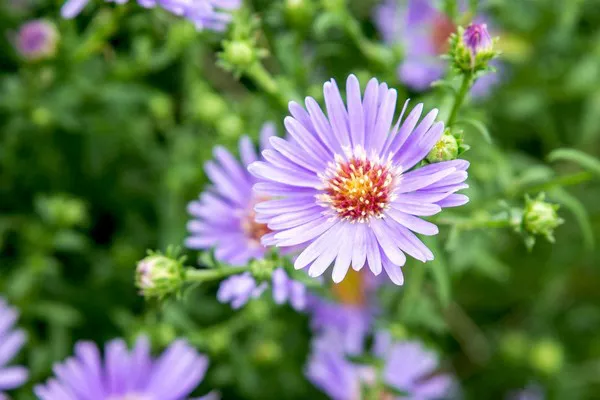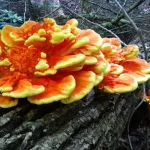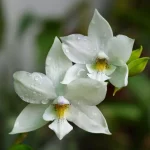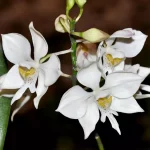The Aster flower, known for its striking beauty and variety of colors, carries deep symbolism and significance across different cultures and contexts. This article explores the Aster’s symbolism, meaning, and its interpretations in various aspects of life, including color significance, biblical references, tattoos, love, and death.
Aster Symbolism
Aster flowers are imbued with a rich tapestry of meanings, each reflecting different aspects of human experience and emotion.
Historical and Cultural Symbolism
The name “Aster” comes from the Greek word for “star,” which aptly describes its star-shaped bloom. In ancient Greece, Asters were associated with the goddess Astraea, who was said to have wept for the human race. According to legend, her tears turned into Aster flowers, symbolizing both her sorrow and her hope for humanity.
In addition to its association with Astraea, the Aster has been a symbol of elegance, patience, and wisdom. The flower’s ability to bloom late into the year, often when other flowers have faded, represents perseverance and the beauty of enduring love and loyalty.
The Aster is also linked to protection and good fortune. In some cultures, it is believed that Asters can ward off evil spirits and bring positive energy to those who cultivate them. This protective quality makes the Aster a popular choice in various rituals and ceremonies aimed at safeguarding loved ones.
See Also: All About Petunia Flower Meaning and Symbolism
Aster Meaning
The Aster flower’s meaning extends beyond its aesthetic appeal. It is a powerful symbol with various interpretations depending on the context.
General Meaning
In general, Asters represent grace and elegance. Their delicate petals and vibrant colors evoke a sense of refinement and beauty. The flower’s long-lasting bloom also symbolizes resilience and enduring affection, reflecting the strength of relationships that stand the test of time.
Asters are often associated with the virtues of patience and humility. Their ability to thrive in challenging conditions and continue blooming late into the season reflects the qualities of perseverance and modesty.
Symbolism Across Cultures
In different cultures, the Aster’s meaning can vary. In Victorian England, Asters were used to convey messages of love and admiration. They were often included in floral arrangements to express deep, lasting emotions and appreciation.
In Native American cultures, the Aster was sometimes used in rituals to promote spiritual growth and healing. The flower’s beauty and resilience were seen as symbols of the strength and endurance necessary for personal transformation and recovery.
Aster Color Meaning
The color of an Aster can significantly influence its symbolism and the message it conveys. Each hue of the Aster carries its unique meaning.
Purple Aster
Purple Asters are often associated with royalty, wisdom, and spirituality. The color purple signifies nobility and high status, and in the context of Asters, it symbolizes dignity and elegance. Purple Asters can also represent deep emotional connections and loyalty.
White Aster
White Asters symbolize innocence, purity, and new beginnings. Their pristine white color makes them ideal for weddings and other ceremonies that celebrate fresh starts. White Asters convey a sense of sincerity and truth.
Pink Aster
Pink Asters are linked to love, affection, and sensitivity. Their soft, pink hue represents gentle care and admiration. Pink Asters are often used to express romantic feelings or deep friendship.
Red Aster
Red Asters symbolize passion, energy, and determination. The bold red color conveys a sense of intensity and strength. Red Asters are associated with strong emotions, whether in love or ambition.
Blue Aster
Blue Asters are rare and are connected to serenity, calmness, and trust. The soothing blue color represents faithfulness and patience, and blue Asters are often seen as symbols of inspiration and creativity.
Aster Meaning in the Bible
While the Aster flower itself is not directly mentioned in the Bible, its symbolism can be interpreted through biblical themes and imagery.
Biblical Symbolism
The Aster’s connection to stars and its beauty can be linked to the biblical theme of divine creation and celestial beauty. The stars are often used in the Bible to represent God’s creation and divine guidance. The Aster’s star-like appearance can symbolize heavenly guidance and the beauty of God’s creation.
The flower’s enduring beauty and ability to thrive in difficult conditions can also be seen as symbols of faith and perseverance. In the Bible, enduring faith and the promise of eternal life are central themes, and the Aster’s resilience mirrors these spiritual concepts.
Aster as a Symbol of Hope and Renewal
In a biblical context, the Aster can also represent hope and renewal. Its late blooming season and ability to bring color to the garden when other flowers have faded can symbolize the hope of new beginnings and the continuity of life. This aligns with the Christian belief in resurrection and eternal life.
Aster Meaning in Tattoos
Aster tattoos are a popular choice for those seeking designs with meaningful symbolism. The flower’s various meanings can be expressed through different tattoo styles and placements.
Symbolism of Aster Tattoos
An Aster tattoo often symbolizes elegance, patience, and love. It can be a tribute to a loved one, representing the enduring nature of their memory and the depth of one’s feelings. The flower’s connection to protection and guidance can also make it a meaningful design for those seeking comfort and strength.
Design and Placement
The design of an Aster tattoo can range from realistic to abstract, depending on personal preference. The placement of the tattoo can also add layers of meaning. For example, a tattoo on the wrist or forearm may symbolize a constant reminder of love and patience, while a design on the back or shoulder may represent strength and protection.
The color of the tattoo can further enhance its symbolism. A vibrant, multicolored Aster tattoo can reflect the flower’s various meanings, while a more subdued design can convey a sense of elegance and serenity.
Aster Meaning in Love
The Aster flower has a strong association with love and romance. Its delicate beauty and variety of colors make it a popular choice for expressing emotions in relationships.
Aster in Romantic Relationships
In romantic contexts, Asters symbolize loyalty and devotion. Their long-lasting bloom and vibrant colors reflect the enduring nature of true love. Giving an Aster bouquet can be a way to express deep emotional bonds and a promise of unwavering support.
Aster in Friendship
Beyond romantic love, Asters are also symbols of friendship and trust. Their gentle beauty and calming presence make them ideal gifts for friends, representing the strength and stability of a close relationship. Asters can be used to celebrate milestones in a friendship or simply to show appreciation.
Aster Meaning in Death
The Aster flower holds significant meaning in the context of death and mourning. Its symbolism can provide comfort and convey respect for those who have passed away.
Aster in Funerals and Memorials
In funerals, Asters are often used to symbolize remembrance and farewell. Their star-like appearance can represent the idea of a loved one becoming a star in the sky, watching over those they have left behind. The flower’s resilience and enduring beauty serve as a tribute to the strength and courage of the departed.
Aster in Grief and Healing
For those grieving, the Aster can be a symbol of hope and healing. Its presence in a garden or home can serve as a reminder of the enduring connection to a loved one and the healing power of nature. The Aster’s ability to bloom late into the season reflects the continuity of life and the hope of renewal.
Aster in Mythology and History
The Aster flower has a rich history and mythology that further enhance its symbolism. In ancient Greek mythology, Asters were said to have originated from the tears of the goddess Astraea. This connection to the divine and the stars adds a layer of mystique to the flower’s symbolism.
In Roman times, Asters were used in rituals and offerings to the gods, symbolizing a connection between the earthly and the divine. The flower’s magical properties and ability to ward off evil spirits made it a protective symbol in various cultural practices.
Aster in Modern Culture
In contemporary culture, the Aster continues to be a beloved flower in gardens, floral arrangements, and tattoos. Its timeless beauty and rich symbolism make it a meaningful choice for expressing a wide range of emotions and sentiments.
Aster in Art and Literature
The Aster is often featured in art and literature as a symbol of elegance, grace, and mystery. Its star-like shape and vibrant colors make it a popular subject for artists and poets, who use the Aster to evoke feelings of beauty and wonder.
Aster in Gardening
In gardening, the Aster is cherished for its late blooming season, which brings color and life to gardens in the fall. Its ability to attract butterflies and other pollinators adds to its appeal, making it a symbol of life and renewal.
Conclusion
The Aster flower, with its rich symbolism and multifaceted meanings, remains a powerful and beloved symbol across cultures and contexts. Whether used to convey love, express grief, or celebrate life, the Aster carries a message of endurance, beauty, and hope. Its connection to the stars and its various colors add depth to its symbolism, making it a meaningful choice for a wide range of expressions and occasions.
Related topics:













